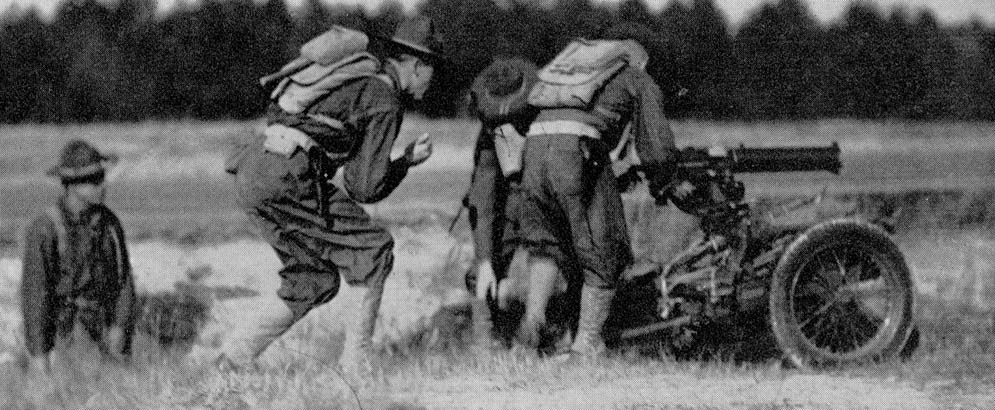By Robert G. Segel
The tools of war are invariably large, bulky, heavy and usually consisting of many components. Moving men from one area of operations to another can, if no other means are available, still be readily accomplished by the use of their own two feet. Moving materiel, on the other hand, poses many more logistical problems and the means used have to be many and varied as the task and circumstance demand. Moving whole armies involves planes, ships and convoys of large trucks to move men and equipment. As the army breaks down into smaller units – divisions, battalions, companies and squads, so must the support equipment be scaled down to address the needs of the individual soldier. While the foot soldiers are still responsible for carrying the issued equipment, there are means of transportation available to them to assist with the larger and heavier loads. This has been true throughout history whether discussing the Roman Legions or today’s modern armies. Small carts and wagons whether drawn by horse, oxen, mule or man have always been at the forefront of expedient materiel movement.
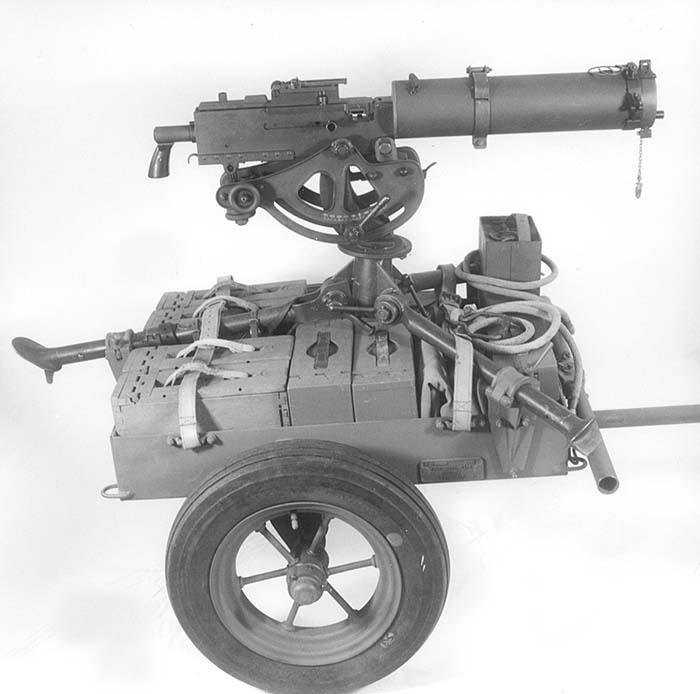
With the advent of the industrial revolution in the 1800s, the foot soldier no longer carried just a pike, lance, spear, bow, sword or rifle. The rapid development of more complex mechanical weapons systems necessitated the use of small carts to move materiel right up to the front lines. World War I saw a tremendous increase in the need and use of small carts in all types of applications. Foot soldiers responsible for the newer and larger small arms such as machine guns and mortars needed a mode of transportation that addressed their needs in the field. (See Small Arms Review Vol. 3, No. 10, July 2000 for a discussion of the Model 1917 Machine Gun and Ammunition Carts used in World War I.)
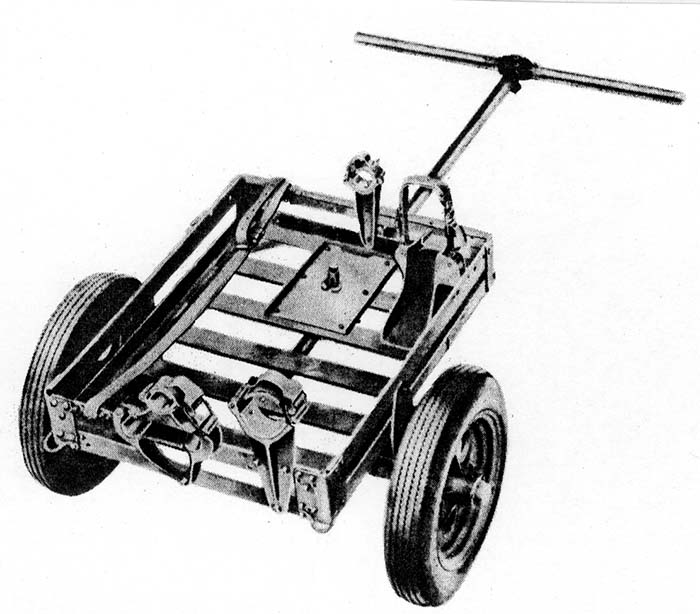
The lessons learned in World War I brought about a series of rapid developments in the inter-war years to meet the demands of a rapidly changing military culture. Among the many items that were further refined were the small hand carts. No longer designed with the horse or mule as the primary means of power the new carts had to be able to withstand the demands of towing by motored vehicles over longer distances and at faster speeds and be more robust in their construction. Of course, provisions still had to be made to accommodate the last line of power: the foot soldier.
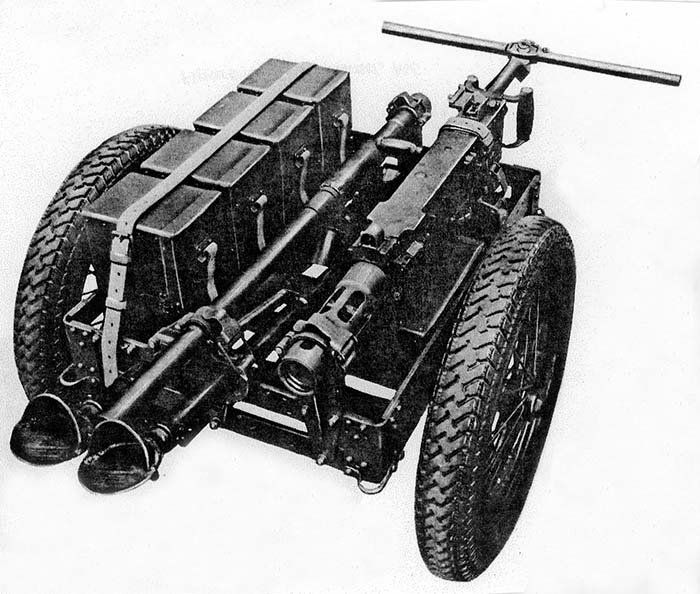
Shortly after World War I in the mid 1920s, the Mount, Wheeled, Machine Gun, M1 was developed for the dual purpose which combined the idea of a T base (trail assembly) for the M1917 tripod with that of a two wheeled light weight cart for transportation of the Browning M1917 water cooled machine gun, accessories and ammunition in the set up and ready to fire configuration. The idea being that the set up gun could be quickly brought to use and fired from the cart if need be or the soldier could quickly dismount the gun and tripod and set up in a position without having to assemble the components. A third option was to leave the gun as set up and remove the wheels and simply drop the entire T-frame with the mounted gun on the ground. This method was viewed as especially valuable in sand or soft earth conditions that without it the tripod feet would bore into the ground and the gun become unstable. The M1, the first post World War I hand cart, was a simple T-shaped affair with solid rubber coated wheel rims and a simple bracket to hold extra ammunition boxes.
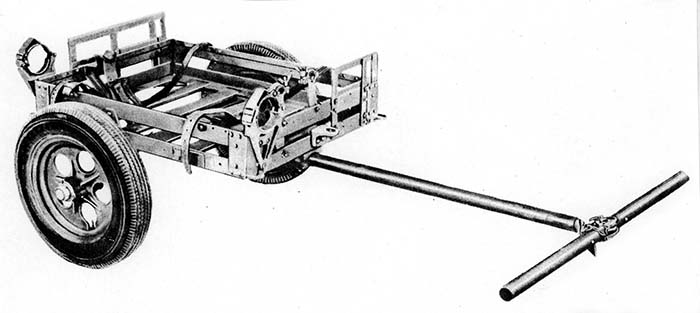
Quickly on the heels of the development of the Cart, M1 were the Cart, M2 and Cart M2A1. These carts were basically updated versions of the old wooden M1917 Ammunition Carts in that they were still designed to be drawn primarily by horse or mule but were constructed of metal rather than wood. The Cart, M2 was issued for transporting .30 caliber machine gun ammunition, 37-mm gun ammunition, light mortar ammunition and communication equipment. The Cart, M2A1 is the identical cart as the M2 except that it has front and rear brackets specifically for transporting the 81-mm Mortar and Bipod Mount M1.
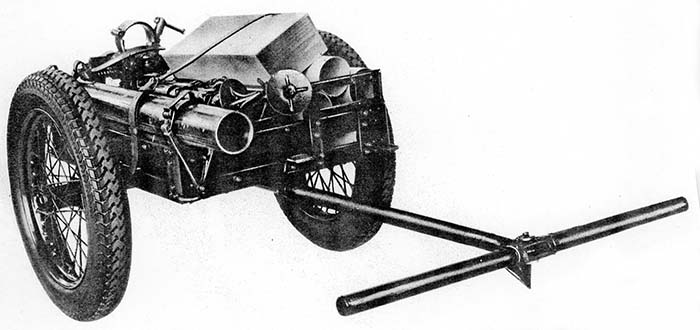
Next in the litany of hand carts developed in the 1930s were the Carts, Hand, M3 and M3A4 (utility), M4 and M4A1 (.30 caliber machine gun), M5 and M5A1 (.50 caliber machine gun) and the M6 and M6A1 (81-mm mortar). They consist of two types and are of four purposes. The first (earlier) large wheeled type have 4” x 18” motorcycle wheels on a straight axle and are identified by the designations M3, M4, M5 and M6. These carts were classified as limited standard during World War II. The second or small wheel type have 4” x 12” cast aluminum wheels on an offset axle and are identified by the model designation M3A4, M4A1, M5A1 and M6A1. These carts were classified as standard during World War II.
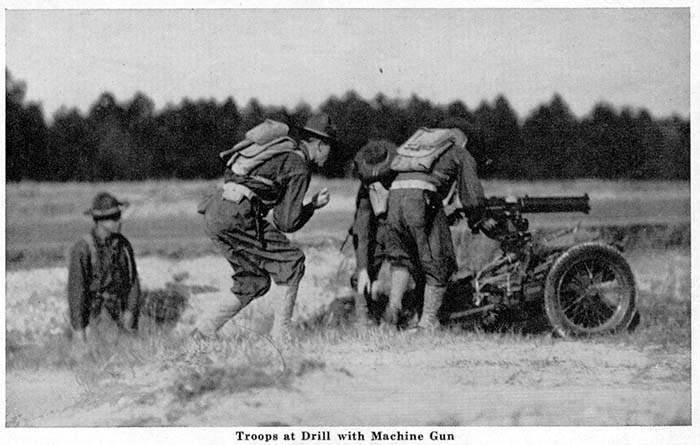
The carts are drawn by man power but are equipped with a lunette for limbering to a Jeep or other small vehicle. When drawn by man power a drawbar is secured to the lunette with the hand cart drawbar retaining pin. When not in use the drawbar is carried on the drawbar bracket which is riveted to the front body. Provision is made for attaching tow ropes with D-handles to the cart body when additional man power is required to pull the load. The carts are also designed so that two loaded carts can be transported on trucks when placed between the seats provided for personnel.
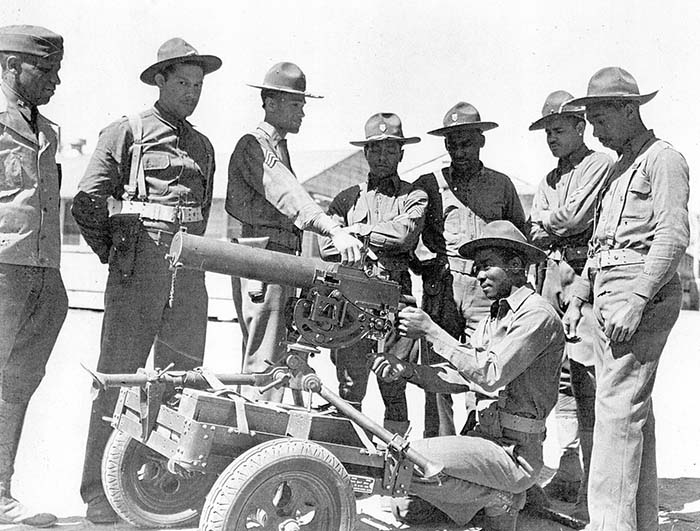
The M3 and M3A4 utility hand carts are comprised of the chassis and body. The chassis of the M3A4 small wheeled cart is composed of an offset axle, tongue and drawbar assembly. The axle is an aluminum-alloy tube and assembled on each end are aluminum-alloy axle brackets that are riveted to the axle. Steel spindles, to which the wheels are mounted on anti-friction bearings, are assembled in the axle brackets and secured by nuts and cotter pins. The axle brackets are fastened to the side and bottom of the cart body by bolts. The tongue is an aluminum-alloy tube reinforced by a liner made of the same material. The spade lunette is riveted to one end and the tongue and axle bracket which fastens the tongue to the axle to the other end. The tongue is secured to the front of the body by a clamp. The body, which is the same for both the large wheeled M3 and small wheeled M3A4 carts, is a rectangular shaped open box which is bolted to the chassis. The M3 body is constructed of aluminum channels and rails reinforced with angles and gusset plates held together by rivets. The M3A4 body is made of steel and does not require the reinforcing angles and gusset plates. Holes are drilled in the body of both the M3 and M3A4 to bolt the brackets which are required to convert this cart for its other uses.
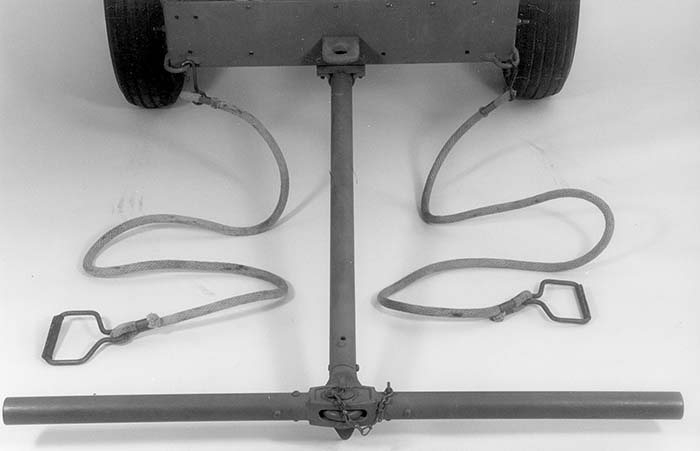
The M4 and the M4A1 .30 caliber machine gun hand carts are converted from the M3 and M3A4 carts respectively by the addition of three brackets to which the legs of the M1917A1 tripod mount are attached. The Browning .30 caliber M1917A1 water cooled machine gun, which is used on this mount, can then be used as an anti-aircraft gun or the gun and mount can be quickly removed to be used as a ground gun. Leather straps are also provided to hold spare ammunition boxes and accessories.
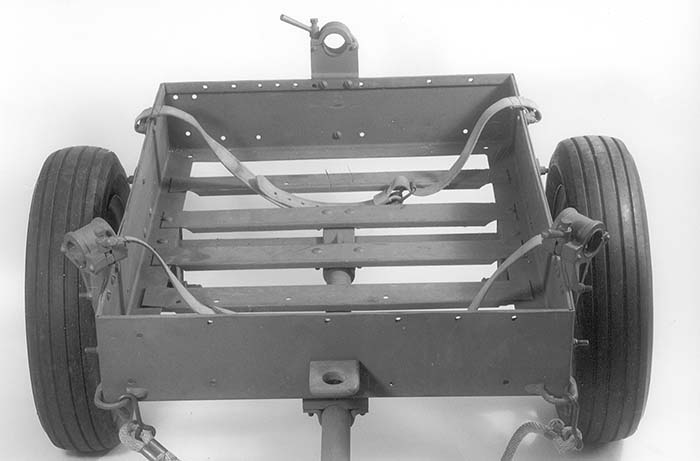
The M5 and M5A1 .50 caliber machine gun hand carts are also converted from M3 and M3A4 carts respectively by the addition of brackets to receive the Browning .50 caliber M2HB, flexible and the M3 tripod mount during transit. Unlike the .30 caliber set up, the .50 caliber is transported in a disassembled state though the brackets are equipped with quick release clasps to facilitate speedy unlocking. A leather strap is provided to secure the ammunition boxes.

The M6 and M6A1 81-mm mortar hand carts are also converted from M3 and M3A4 carts respectively by the addition of brackets and supports to secure the 81-mm mortar M1, and 81-mm mortar mount M1 during transit. Quick release clamps and leather straps are also provided.
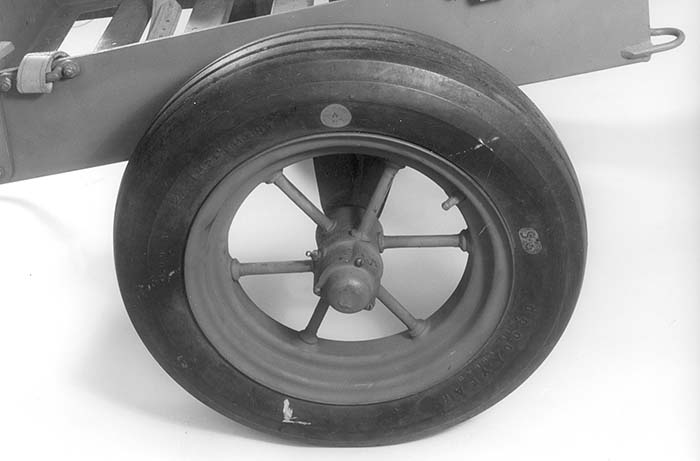
Though there are a number of “M” designations for the cart, the basic M3A4 Utility Hand Cart fulfilled a vital need in the war effort by easily being converted to a number of uses merely by the selection of clamps and brackets.
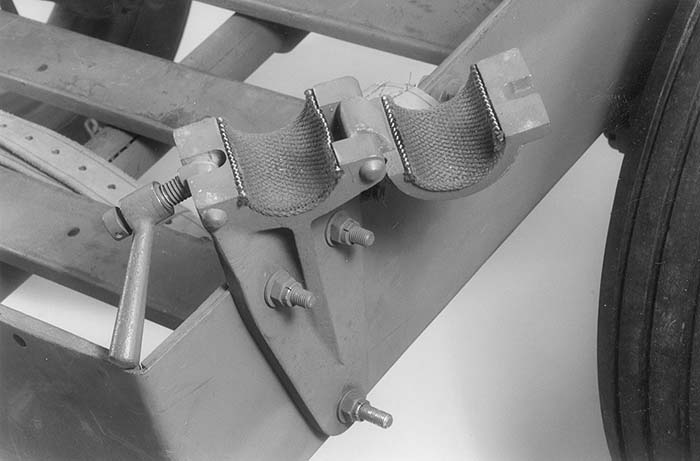
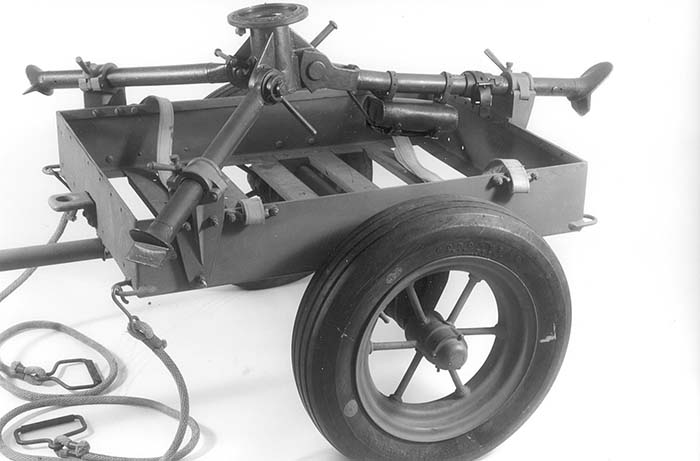
The carts were manufactured in the tens of thousands (some estimates go as high as 70,000) by Rock Island Arsenal, John Wood Manufacturing, Trussbilt Incorporated and Omaha Industries. Yet, only about a hundred or so are accounted for today in conditions ranging from rusted out basket cases to restorable examples. The carts did not have a priority for return after the war and were left wherever they were to pretty much rot away. They were used extensively by the Army and Airborne units in Europe and by the Marines in the Pacific. (As an interesting side note, in the movie “The Longest Day”, John Wayne, playing Col. Benjamin Vandervoort of the U.S. 82nd Airborne Division, breaks his ankle when jumping into France on D-Day and is hauled around on a M6A1 mortar configured cart.)
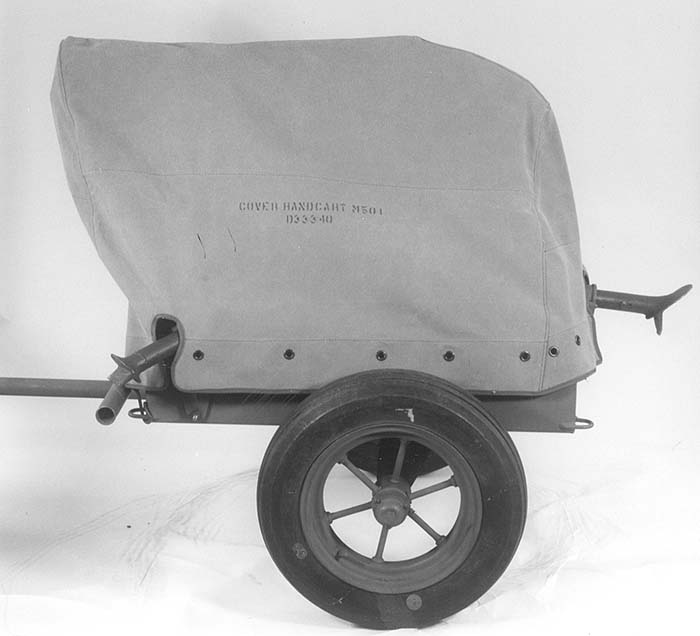
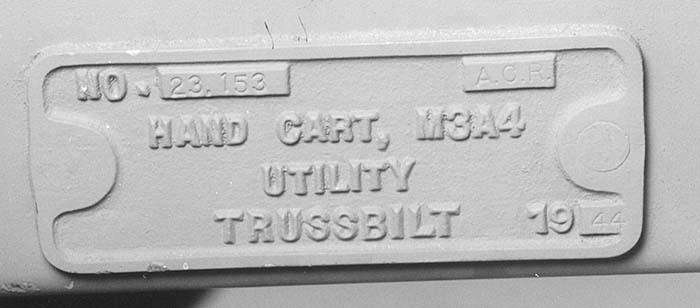

| This article first appeared in Small Arms Review V5N5 (February 2002) |



